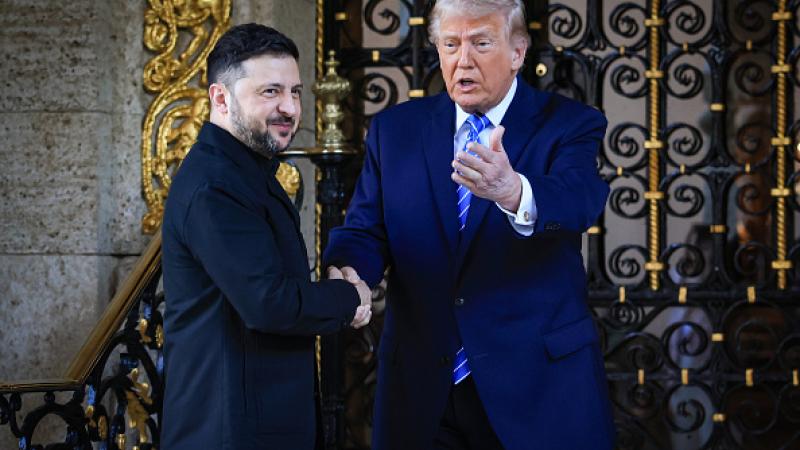Putin's inflatable army: Does Russia plan to fool the west with tank-shaped balloons?
Russia did not deploy an inflatable force "in any significant way, if at all," along the border with Ukraine, a Pentagon analyst said.
Does Vladimir Putin plan to fake out the West with inflatable tanks, missiles, and fighter aircraft?
Reports in the British media on Thursday described a realistic balloon army that puffed up this week as part of a Russian military exercise in the woods near Moscow.
"The inflatable equipment is nearly identical to the original thanks to the use of special materials," a British publication quoted the Russian military as saying. "It also has the same radiation background so that an enemy does not notice the deception."
Two British media outlets published photographs of what appear to be blow-up versions of Russian fighter jets, armored vehicles, and missile launchers.
One of the outlets, The U.S. Sun, cited the Russian Defence Ministry as explaining the exercise and what it entailed.
"Tanks, aviation and air defence systems were moved to Moscow region so that 'an enemy' had a chance not only to find a hidden aerodrome, but to obtain satellite pictures, too," the Defense Ministry reportedly said.
Russia did not deploy the inflatable force "in any significant way, if at all," along the border with Ukraine as part of the recent military buildup that alarmed the world, a Pentagon analyst said. But, the analyst noted, decoys are able to successfully trick the enemy. They have been used by a number of countries, including the United Kingdom when fooling the Nazis in World War II.
The Russian Ministry of Defense did not respond to emailed queries from Just the News.
Putin's inflatable armed force was created by a Moscow-based company, Rusbal, according to British media. The company originally was formed in order to make hot air balloons
The company did not acknowledge queries from Just the News, but on its website claims to create inflatable military equipment "in the interests of" the Russian military. Items depicted on the company site include rubberized aircraft, missiles, and tanks, as well as radar decoys and camouflage netting.
The company got into the military decoy business in 1993, after the hot air balloon market sank. It began by making blow-up tanks and S-300 missiles, and eventually expanded the lineup to include other types of weapons and equipment.
While deflated, the decoys are packed into plywood boxes, and can be shipped via road, rail, air, and sea, according to the company. Each fake device comes equipped with ground anchors to prevent it from flying away. The devices can be inflated within 15 minutes by a small crew.
Reports on the inflatable force emerged as Putin's defense chief announced that Russia would withdraw its troops from the border with Ukraine. In recent weeks, international speculation was rampant that the approximately 100,000-strong Russian force might soon invade Ukraine.
















